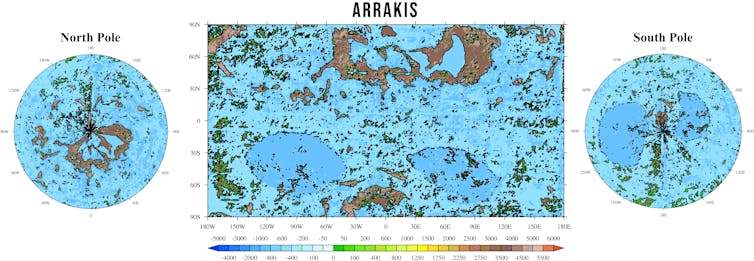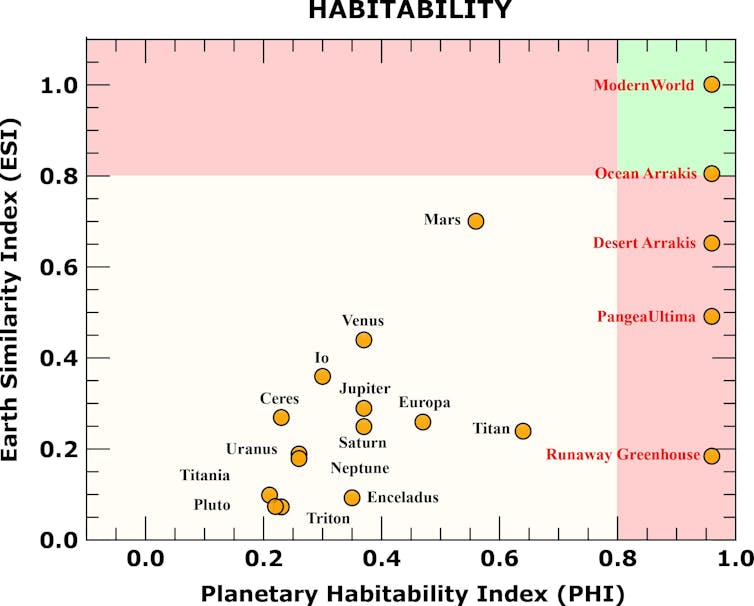A successful haiku could be described as a half-finished poem. Originating in Japan in the 17th century, the haiku uses a combination of sensory language, seasonal references, a sense of contrast and a focus on the present tense to share an experience between writer and reader.
It relies on the reader to “finish” the poem by employing their recollections of sensations and emotions to connect to the moment described as vividly as they do their own experiences.
Haiku often depict moments in a particular season by describing the behaviour of animals, the weather and the appearance of plants. With a new generation of haiku poets, there’s a whole new collection of work that reflects how seasons are changing as a result of rising global temperatures.
Could haiku poetry written more recently contain a trace of the changes wrought by our warming climate? That’s something one of us (Jasmin) set out to investigate by analysing haiku published in English over the last 30 years.
First, let’s learn how to read haiku.
Do the seasons feel increasingly weird to you? You’re not alone. Climate change is distorting nature’s calendar, causing plants to flower early and animals to emerge at the wrong time.
This article is part of a series, Wild Seasons, on how the seasons are changing – and what they may eventually look like.
What enables this brief poetic form to achieve its resonance is its use of negative space. A haiku is a poem in two parts – a fragment (one line) and a phrase (two lines), divided by a pause (signified by a line break or punctuation).
Related to the concept of ma in Japanese visual arts, which perceives empty space in an artwork as a positive entity, the negative space in haiku is a way in to the contemplative experience of the poem.
The following by Japanese poet Matsuo Basho (1644-94) is the most famous haiku ever composed:
old pond –
a frog leaps in
water’s sound

Lesley Andrew/Shutterstock
To write a different account of this same event, you could say something like a frog leapt into an old pond and made a sound. But the key distinction between the two is the negative space that follows Basho’s first line. It encourages the reader to pause, breathe and contemplate the old pond before they encounter the frog leaping and the sound of the water.
When our minds become still, and reflective, like the old pond, we witness the action of an animal living simply according to its nature. We perceive things just as they are. The result is an experience of interconnectedness: a realisation that we are not separate from the natural world, but a part of it.
In the following haiku by Basho we experience the season as both a physical setting and as a metaphor for emotional experience:
no-one walks
along this road but I
autumn evening

S_Oleg/Shutterstock
In a world of increasing anxiety and distraction, the negative space in a haiku affords us moments of reflection and invites us into a dialogue with the rest of the natural world.
It requires a sensitivity on the part of the reader, but its effect is to instil an appreciation for what surrounds us. Through a meaningful, felt awareness of the seasonal cycles, the reading and writing of haiku inspires a deeper connection to our environment.
How haiku is changing
I spent the summer of 2022 in my home office, consuming decades of haiku journals and anthologies, trying not to leave sweaty fingerprints on their ancient covers in the unnatural 40°C heat. As that year’s researcher-in-residence for the British Haiku Society, working on a project called Twisting Point, I was searching for tell-tale traces of climate change in the English-language haiku archives.
My goal was to contrast present-day haiku against older archival ones, using the differences between them to make readers sensitive to nature’s decline and to suggest how the English-language haiku form might be evolving due to climate change.
I was looking at 30 years’ worth of haiku. In the UK during this time flying insect populations have fallen by over 60%, 41% of wildlife species have decreased in abundance and the frequency of heatwaves, floods and other extreme weather have all increased. More than enough change has occurred in these three decades to manifest in the archives.
Yet, these changes emerge in a strange fashion. It’s hard to write about nature’s losses, and writers tend to do so unconsciously. Rather than tracking population declines in concrete terms, then, the language used around certain species has altered, becoming soaked in grief.
For example, over 25 years numbers of curlews, a wading bird, have halved in the UK. Earlier haiku described their powerful cry “lengthen[ing] the hill[s]”; a poem written in 2022 found them “calling across wintry mudflats, haunting the wind”. Similarly, since 2000, declining butterflies have moved from being a “cloud” common in the background of haiku to lone survivors “pushing against time”.

Emutan/Shutterstock
The archetypal seasonal words used in haiku are shifting too, disrupting centuries-long traditions of meaning and emotion. As winter has been squeezed into weeks, spring arrives earlier and frosts become tardier, snowdrops have become a symptom of the changing haiku form.
Here is a haiku published in the 1990s in the spring seasonal category (the traditional haiku date for spring’s beginning is February 4):
song of a greenfinch
a ray of sun on cold steps
and a few snowdrops
By 2022, snowdrops are emerging in December in this tanka (a slightly longer poem variety) by Ruth Parker:
Omicron triumphs
and sends Christmas packing – but in the garden
the delicate white hope
of snowdrops

Daniel Chetroni/Shutterstock
I was struck by how few haiku seemed to address climate change. Twisting Point became my call to arms for haiku writers. Haiku are about intense moments of perception, in which “the vast is perceived in one thing”. But in addressing climate change so little, are English-language haiku really depicting “the vast”?
Since 2022 the issue has come to the fore, with The Guardian describing how Japanese haiku writers are “lost for words” in the face of climate change. Meanwhile, Twisting Point is to be republished in a journal of the New Zealand Poetry Society. The call to haiku arms is growing: the vast climate crisis is upon us, and we should write about it.![]()
———————-
This blog was written by Jasmin Kirkbride, Lecturer in Publishing, University of East Anglia and Paul Chambers, PhD Candidate in Creative Writing, University of Bristol. This article is republished from The Conversation under a Creative Commons license. Read the original article.





